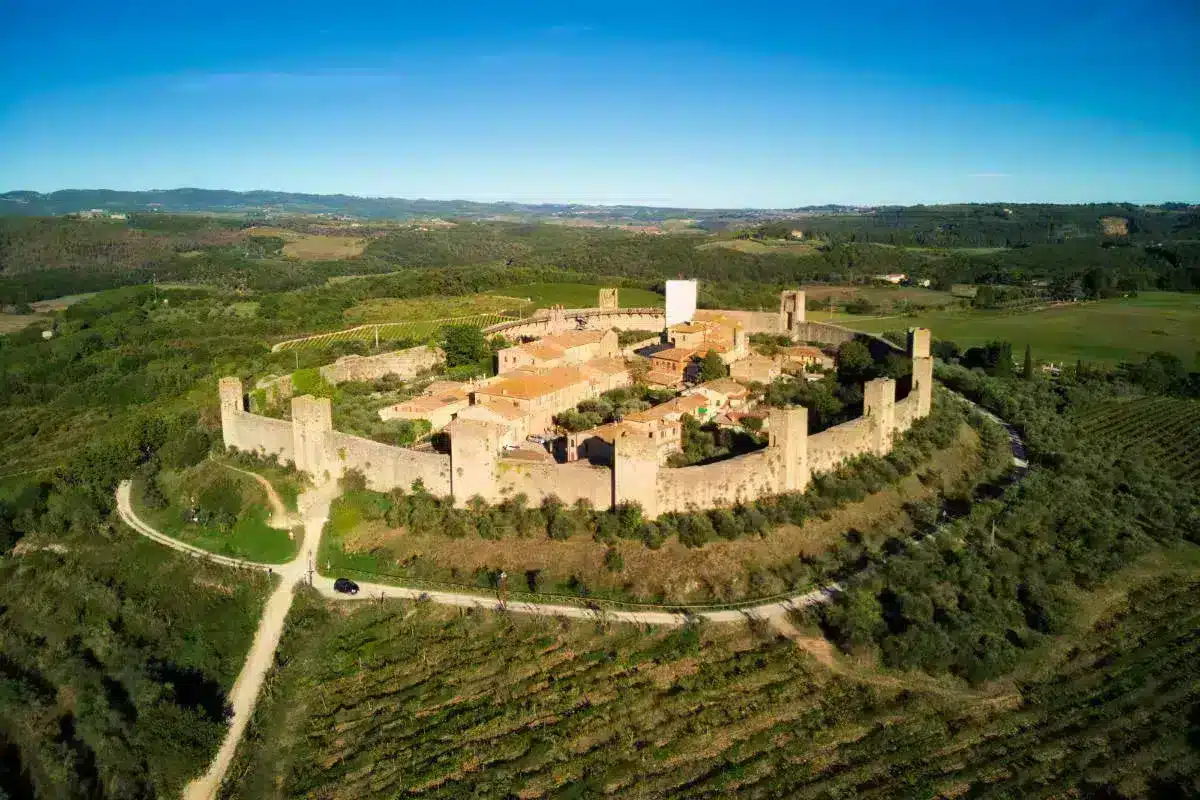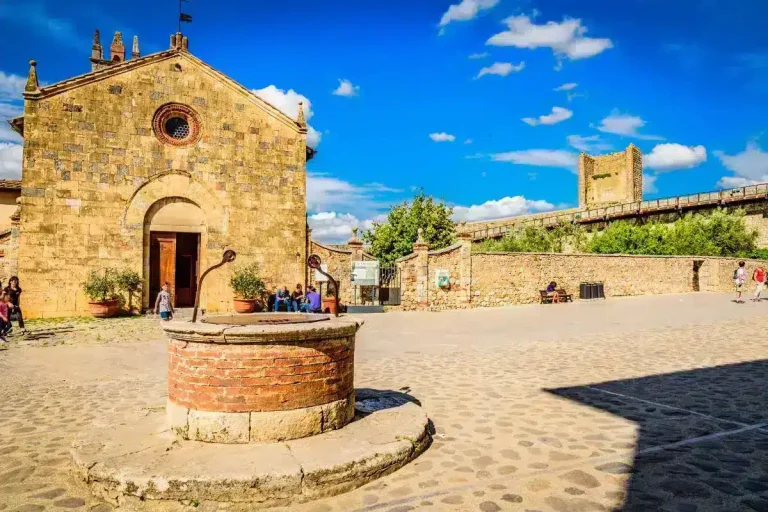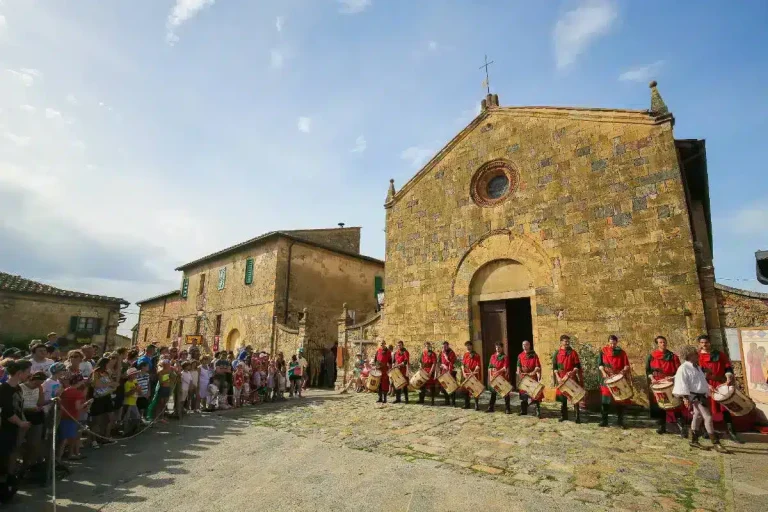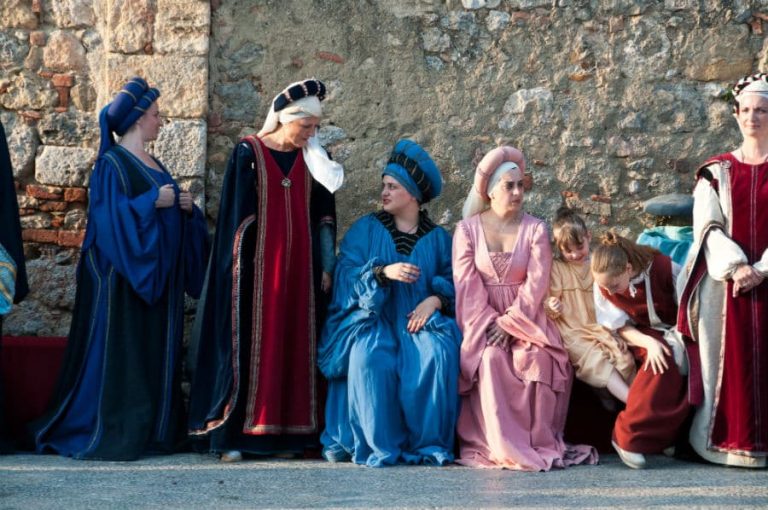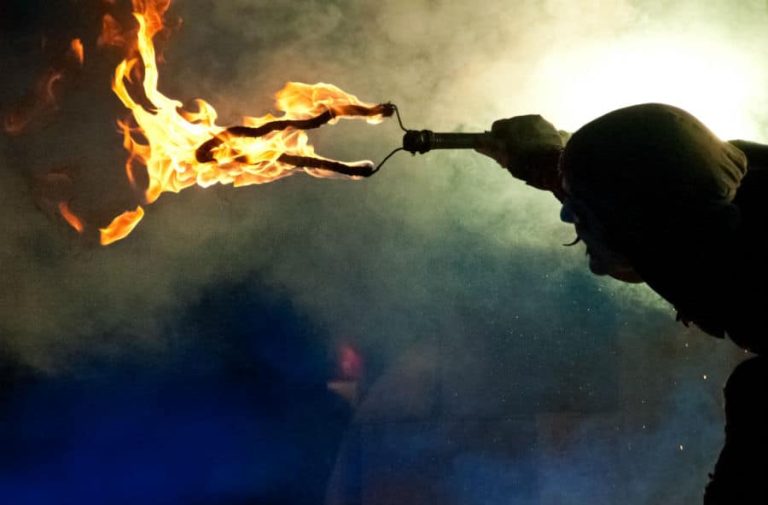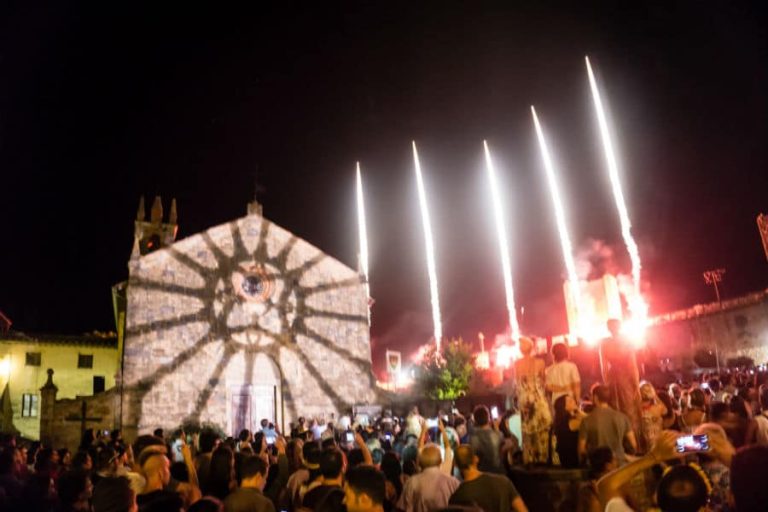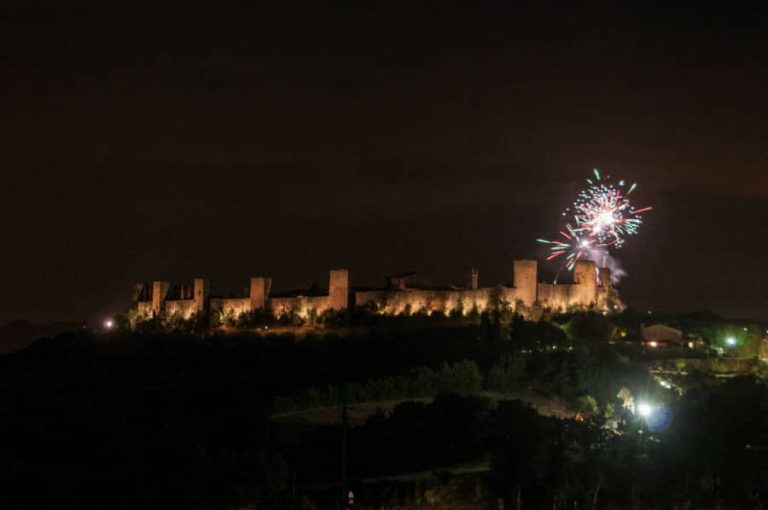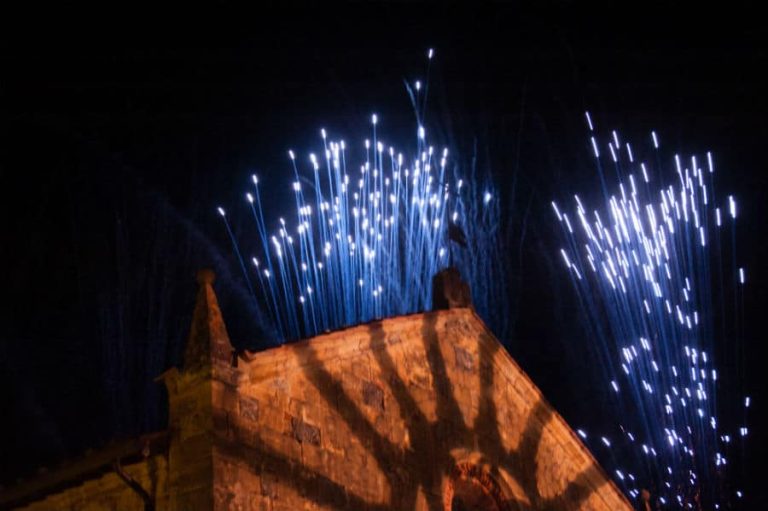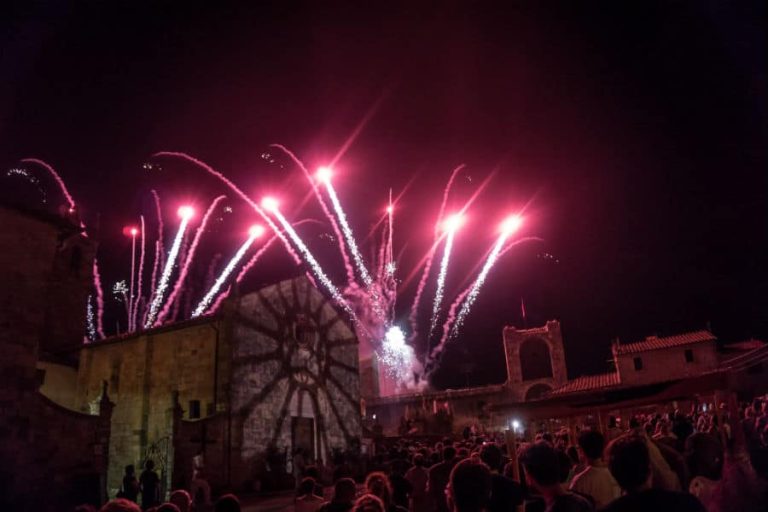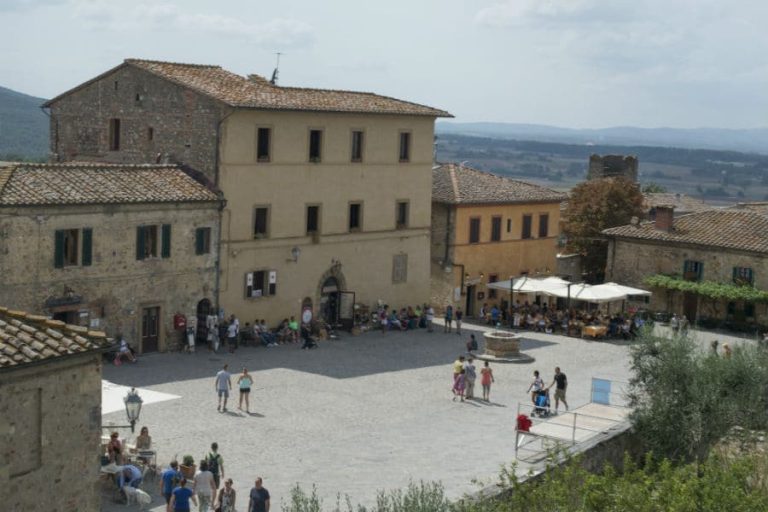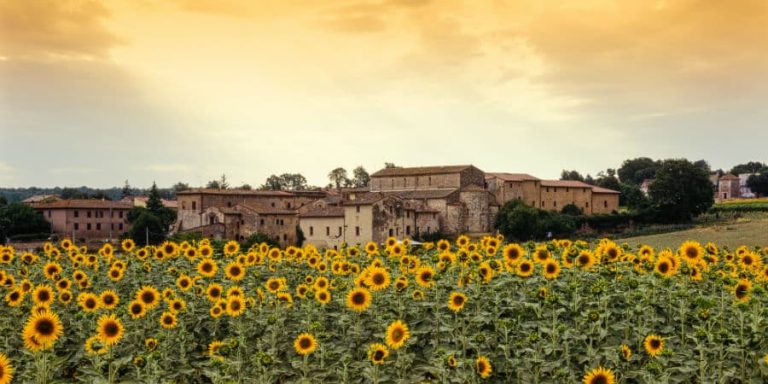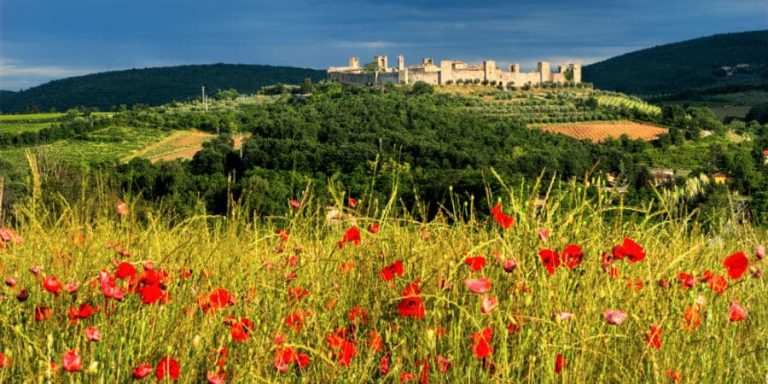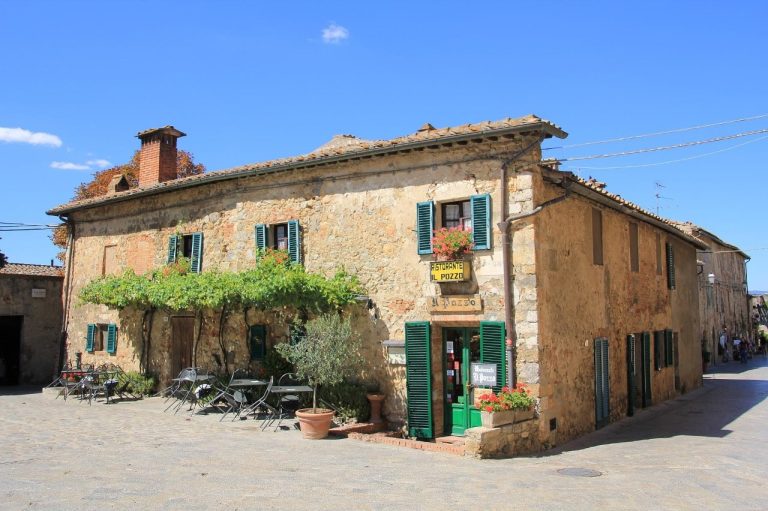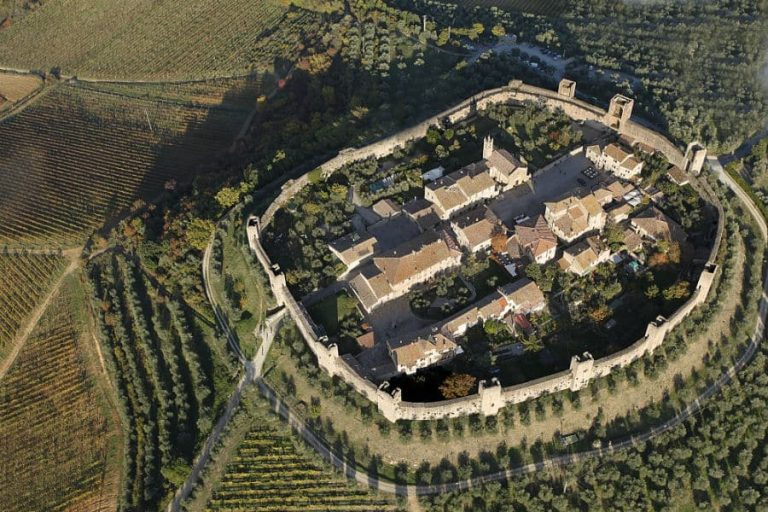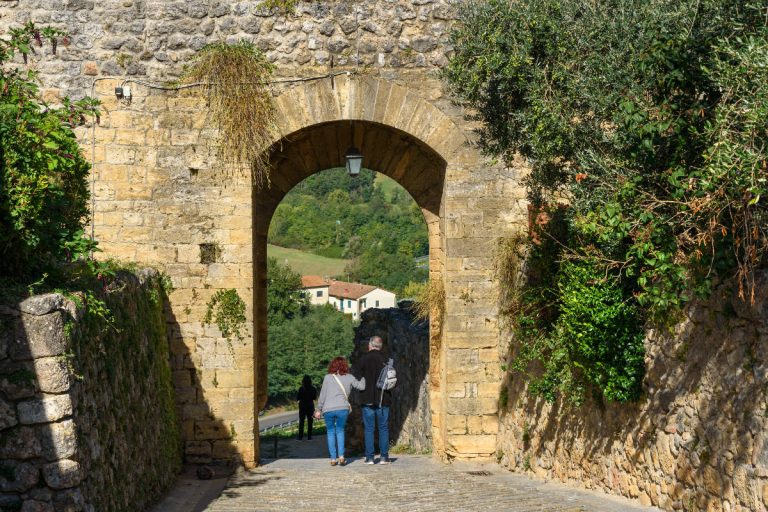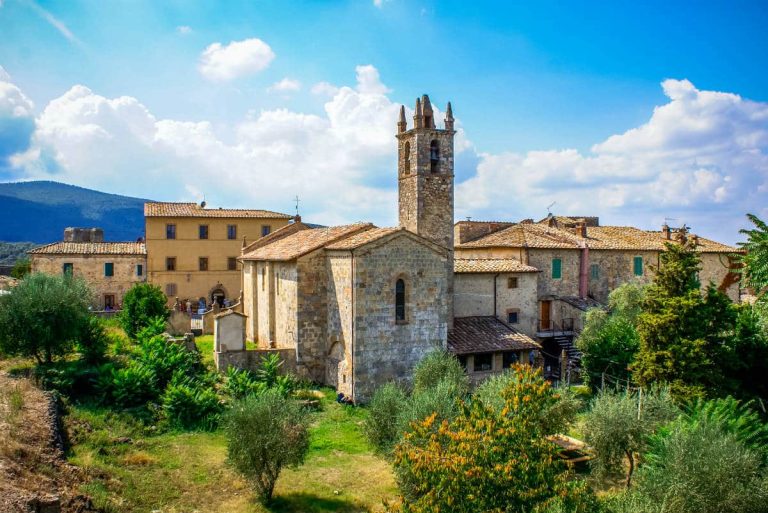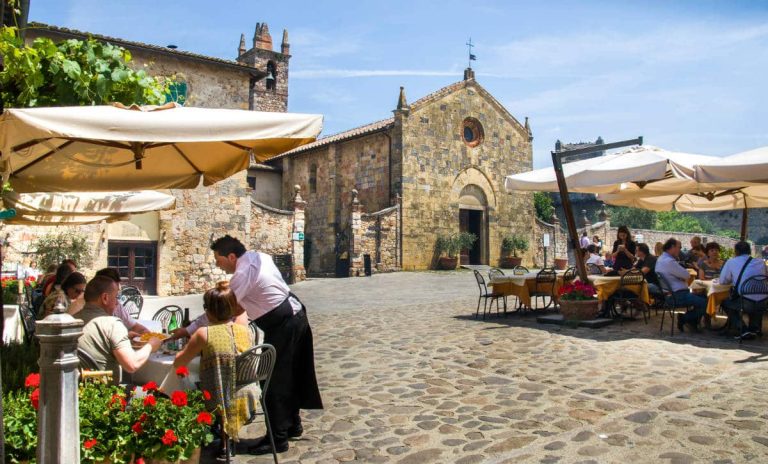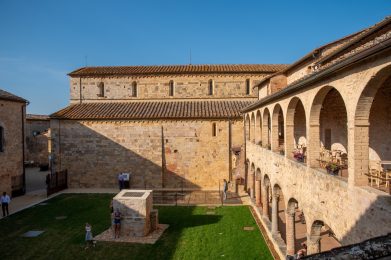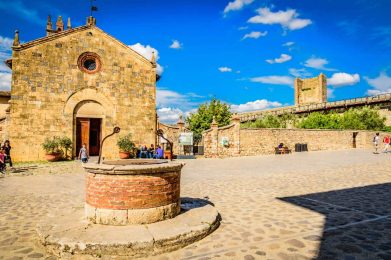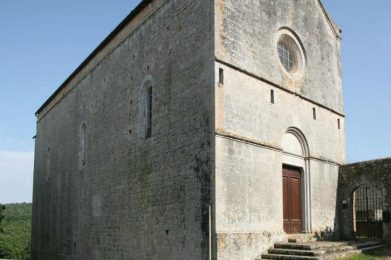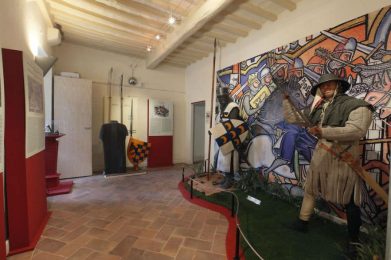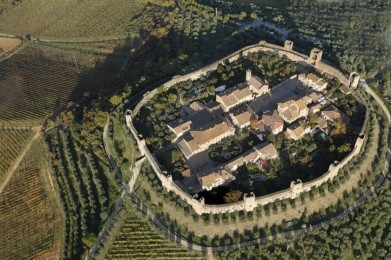Its strategic location, overlooking the Via Cassia and the surrounding area, makes it one of the most fascinating and recognizable places in the region, a perfect example of how history and nature can blend harmoniously. The town is also an important reminder of how the Republic of Siena fortified its territory to defend itself from the incursions of its Florentine rivals.
Historical background
The history of Monteriggioni begins between 1213 and 1219, when the Republic of Siena decided to build the castle with the intention of protecting its borders, particularly along the Via Francigena, one of the most important pilgrimage routes of the time. The hamlet's location on top of a hill allowed the Sienese to easily control traffic to Florence, Siena's historic rival city. The castle was built with a defensive purpose, but it also became a symbol of Sienese power. The decision to build a castle from scratch, rather than annex existing structures, was a novelty in Sienese expansionist policy.
The village of Monteriggioni is surrounded by a 570-meter-long wall, interspersed with 15 towers, 11 of which are still visible today, although some were restored in the 1920s. The two-meter-thick walls follow the natural course of the hill, creating a protective circuit that made the castle virtually impregnable in the past. The walkway above the walls, which was partially rebuilt in 2005, allows visitors to walk the entire perimeter of the village and enjoy breathtaking views of Valdelsa and the surrounding hills.
Delving into the village
The main entrance to the borgo is through the Porta Franca, or Romea, which opens toward Siena. This gate, which once had a heavy gate, is now the access point to Piazza Roma, the beating heart of the borgo. The square, which originally had no pavement, is now paved with stone from the quarries of Rosia, a stone that gives the square an authentic and characteristic appearance. Around the square stand buildings of great historical value, including the Church of Santa Maria Assunta, one of the most significant religious buildings in the village. The church retains many of the original medieval features and is an essential stop for those who wish to learn about the religious history of the village.
One of the most fascinating features of Monteriggioni is its perfect state of preservation. The village has remained incredibly intact over the centuries, retaining its original medieval structures. Not only the walls and towers, but also the inner residential core, with its narrow streets and stone houses, conveys the atmosphere of a time long gone. The village has been awarded the Touring Club's Orange Flag quality seal, a recognition that attests to its historical and cultural value.
Monteriggioni is also a place of great tourist value, not only for its architectural beauty but also for the many activities it offers. One example is the Monteriggioni in Arme educational trail, where visitors can admire faithful reproductions of medieval weapons and armor, reconstructing the atmosphere of the past. The castle, which has withstood numerous sieges over the centuries, is now an ideal destination for those who wish to immerse themselves in history and experience the thrill of walking within the walls of an ancient fortress.
Nearby
Not far from Monteriggioni is the ancient village of Abbadia a Isola, which dates back to the 6th century, and the Castello della Chiocciola, an example of a 14th-century fortification. Nearby are also important archaeological sites, such as the Etruscan necropolis near Scarna, which testify to the long history of this region. In addition, the area is rich in breathtaking natural landscapes, with green hills, enchanting valleys and forests that invite walking and hiking.
Monteriggioni's history is also linked to the war events that marked the end of the Republic of Siena. In 1554, during the war with Florence, the village fell into the hands of the Florentine army, anticipating the end of Siena itself, which was conquered the following year. Despite this, Monteriggioni has never lost its charm, continuing to be one of Tuscany's main tourist attractions.
Monteriggioni is a place that embodies the history, culture and beauty of Tuscany. With its medieval walls, breathtaking views and timeless atmosphere, the village is a true journey into the past, a place where the Middle Ages still seem alive and present. A visit to Monteriggioni is a unique experience, able to fascinate and involve anyone who wishes to discover one of Italy's most beautiful treasures.

